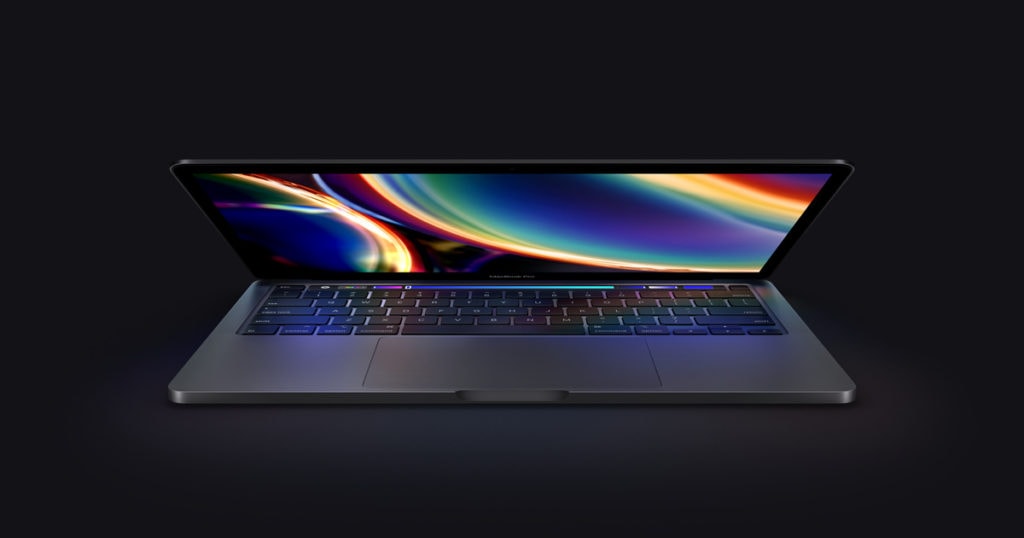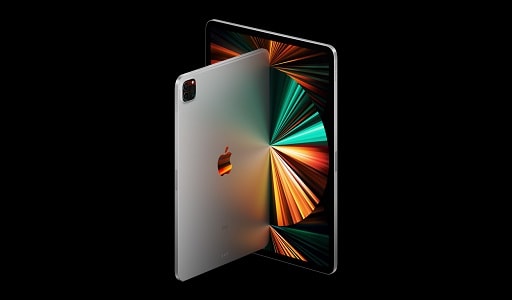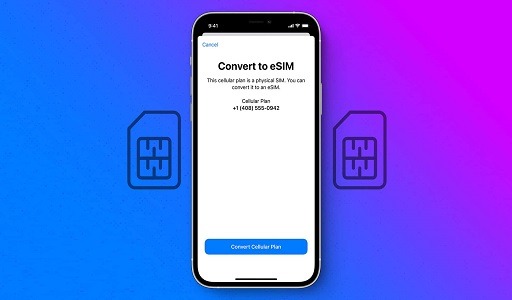The 2016 MacBook Pro’s redesign was divisive, to put it lightly. With itMacBook’s user experiences fancy new Touch Bar, reduced connectivity, and sticky keyboard, the new model’s reception wasn’t as warm as Apple may have hoped.
Many of those issues have been resolved on the new 16-inch model, which is the best Mac product in years. The problem? The 13-inch MacBook hasn’t gotten the fix yet, and not everyone needs the power and size of that larger MacBook.

Fortunately, Apple lowered the price of the 13-inch MacBook Pro in mid-2019, dropping the base model (which now includes the Touch Bar) to $1,299. That comes with an 8th-gen Intel Core processor, 128GB of SSD storage, and 8GB of RAM. With an update coming soon, is the current 13-inch MacBook Pro worth your money?
Still the most luxurious laptop
One look at the MacBook Pro 13 is all you need to know. It’s a Mac. Despite the sea of copycats, the MacBook Pro design still stands out. That was even more impressive when Apple decided to take attention away from its branding, ditching the glowing white apple in favor of a slick, subtle gloss logo similar to what’s on the MacBook, the iPhone, and the iPad.
As always, the MacBook Pro 13 features an all-aluminum, unibody design lacking any visible seams aside from those on the bottom. It’s sturdy as a rock, without a hint of flex in any corner of the device. Despite it being just 3.02 pounds and only 0.71 inches thick, that remains true. That’s not as extreme as it was in 2016, but the MacBook Pro remains a highly portable laptop to travel with.
When this design was originally launched in 2016, the bezels looked trim and modern, despite not being as aggressive as Dell. We remarked that users with the older Pro model would appreciate the improvement.
The MacBook Pro comes in Space Gray or Silver. The new MacBook Air also has the Gold option in the mix. Color choices may seem petty, but they add a touch of personality, and we wish Apple brought some of that to the MacBook Pro. Even Dell has expanded the XPS 13’s conservative color scheme, and HP’s Spectre x360 also has some fancy color options.
Regardless, there’s no arguing with the MacBook Pro’s elegance. The beauty of Apple’s design has always been subtle, so the company is sometimes accused of being safe or boring. The Pro doesn’t even try to sidestep those criticisms. It’s not the smallest 13-inch laptop, nor is it the lightest. There’s something to be said for a design that works, though, even if it’s not innovative, and the MacBook Pro remains the most luxurious laptop around.
Meanwhile, although the MacBook Pro 13-inch has a headphone jack, it makes another connectivity choice that’s just as controversial and, functionally, more important. Apple decided that USB-C and Thunderbolt 3 are the future and have ditched every other port.
You may also like The Best Google Pixel Smartphone Deals
Yes, USB-C is all you get. The MacBook Pro 13 with Touch Bar has four of these ports, two on each side. Even the card reader is missing. The decision has its benefits. The simplicity of the port selection is hard to argue with, and every port is a charging port, so you can plug the wall adapter into whichever is more convenient. The ports are quick, too, so you can hook up multiple displays or use fast external SSDs without worrying about connectivity bandwidth.
Now, for the bad news: You’re going to need adapters, and you might need lots of them. Do you use an external display? That’s an adapter. External hard drive? Adapter. Wired input of any sort? Adapter. Ethernet? Adapter. SD card? Adapter. At best, you’ll need to purchase one or two dongles. At worst, you’re going to need a dock solution, which can add another $100 to $200 to the price.
The greatest irony? Even Apple’s iPhone can’t plug into any MacBook Pro 13 without purchasing an adapter.
However, thanks to Apple’s lead, this has increasingly become the norm, for better or worse. Laptops like the HP Spectre 13, the XPS 13, and the Huawei MateBook X Pro now have similar port options — and it’ll only continue to be the direction the way things go.
At least it can communicate wirelessly. The new Pro 13 has the usual 802.11ac Wi-Fi adapter, now paired with Bluetooth 5.0.
The keyboard of the future isn’t excellent
The 12-inch MacBook, released in 2015, which has since been discontinued, debuted an all-new “butterfly” switch that’s much thinner than any used in a laptop keyboard prior. Though
Apple touted it as having a great feel, we complained that “typing for more than an hour [left us] fingers with a dull ache” due to the keyboard’s stiff feel and limited travel.
Now that same keyboard can be found on the MacBook Pro. Well, not the same
. When launched, the Pro’s keyboard was a “second-generation butterfly mechanism,” with slightly more travel than the first. And it is an improvement.
That’s not to say it’ll serve you
well. While travel has improved, the keyboard continues to suffer a stiff, abrupt bottoming action that can make long typing sessions tiresome. The degree to which this will bother you is a matter of preference.
And it’s not clear
why this sacrifice was made. While the new MacBook Pro 13 is thin, it’s as thick or thicker than many competitors with better keyboards, such as the HP Spectre x360, ThinkPad X1 Carbon, and Dell XPS 13. Whatever the reason, it’s clear Apple had to make a compromise between size, performance, and keyboard quality, with the latter getting the bad end of the bargain.
The increased complaints (and lawsuits) about sticking keys don’t help either. Even with Apple’s newest keyboard update, the third-generation butterfly, it’s been clear that the keyboard sticking issue has not been resolved. We expect Apple to revert to the new “Magic Keyboard” found in the 16-inch MacBook Pro when the rumored 2020 update to the 13-inch comes around.
The keyboard suffers a stiff, abrupt bottoming action that can make long typing sessions tiresome.
Below the keyboard is a revised, plus-sized touchpad. Unlike the keyboard, this is an unmitigated plus. The spacious surface improves the ease of using multi-touch gestures, which work consistently well. While the new, larger surface means constant contact between it and your palms, we didn’t notice a single instance of unintended input throughout our testing. Windows touchpads have improved significantly in the last couple of years, but they’re still not as luxurious as Apple’s.
You may also like New Apple Watch Series 6 with GPS and Cellular
And don’t forget Force Touch. The haptic feedback system, which uses vibration to simulate a click, is good at emulating real movement that most users never notice a difference. It’s quieter than it used to be, too, without sacrificing the satisfying clarity of the click. The touchpad also offers force sensitivity, enabling special interface functions — just like the iPhone. Even with Apple’s own software, the feature isn’t widely embraced, but it’s great when offered.
The Touch Bar searches for purpose.
If nothing else, the Touch Bar is great to look at it. It boasts Retina-equivalent pixel density, which means icons are rendered with crisp, vibrant graphics. And because it’s OLED, blacks look
inky black, so dark it’s often hard to find the Touch Bar’s boundaries.
As a conversation starter, then, it holds up. As a functional tool? Less so. Apple tries to integrate the Touch Bar in a way that makes it relevant even in an everyday web browser, note-taking, and photo-viewing. Its display constantly changes as new apps are opened, and old ones are closed. It performs well, keeping up no matter how quickly apps are switched or how many are open.
Yet there’s rarely much use for it. At best, it provides a quick way to scroll through lists, such as your Photo Stream. It can also be useful if you’d like to scroll through a video – and it’s great at picking up on such content, activating a scroll bar even when browsing YouTube.
In other cases, though, it’s clearly a solution searching for a problem. Take typing, for an instant. As you input text in Safari, Word, and other apps, the Touch Bar constantly flashes word suggestions. It’s a feature that works well on the iPhone, where typing is often slow and cumbersome.
On a laptop, it’s not all that convenient. Type in “office,” for instance, and the Touch Bar will suggest alternatives. Did you mean “officers?” Or, perhaps “off-season?” This happens whether a word is spelled properly or not. Even if you do slip in a typo, it’s hard to imagine why a user would look to the Touch Bar for help when MacOS already presents a correction on-screen and, in most cases, will correct the spelling automatically.
Since its release, a growing number of apps now feature Touch Bar support — including Evernote, Microsoft Outlook, and LastPass. But even with more developer support than it had at launch, the Touch Bar is still not as integral to the MacBook’s user experience as Apple would like it to be.
If nothing else, the Touch Bar is great to look at it.
Even where it
might be useful, the Touch Bar is limited by its size. It automatically displays open Safari tabs, complete with miniature content previews, a feature that could prove helpful. Yet the previews are so small that it’s often hard to tell the tabs apart, even with just three or four open. If you open six, or eight, or ten tabs, then the previews become smaller still until they’re so tiny that it’s hard even to tap the right one. Similar problems trouble its photo preview and video preview capabilities.
In theory, you can scroll through photo collections. In practice, it’s harder to do than with the touchpad. Asus has come up with a competing idea with the ScreenPad on the ZenBook Pro 15, and while that’s not perfect, it does offer a tantalizing glimpse of something better than the Touch Bar. There are even full-on dual-screen laptops in the future like the Surface Neo or the ThinkPad X1 Fold.
In short, the Touch Bar isn’t great. But giving the function row over to an OLED display does come with an important perk called the Touch ID. Yes, you can now log in with your fingerprint, and it works as seamlessly as it does on iPhone. Fast, secure login authentication methods are a great way to improve security for the average user, something that Windows users have enjoyed for a few years thanks to Microsoft’s Hello functionality. And Touch ID integrates with Apple Pay, so you can use it to securely make online purchases — from stores that accept Apple Pay.
The MacBook Pro’s strongest feature: The display
A quick look at the specifications could make you think Apple’s new MacBook Pro 13 had an old display. It’s still Retina, which means the resolution is still 2,560 × 1,600. That was stunning in 2012, but today it seems mediocre next to QHD+ (3,200 × 1,800) and 4K (3,840 x 2,160) screens.
But don’t worry Mac faithful. You can banish any concerns about the display from your mind. It’s fantastic.
We measured a maximum brightness of 548 lux. That’s ridiculously brilliant and complete overkill for use indoors, but it can help make the screen still very glossy, usable in extreme situations. By comparison, the Dell XPS 13 with QHD+ display only hits 278 lux, and the HP Spectre x360 hits 355 lux. Both those systems can have a problem with glare in bright conditions, though Dell gives you the choice to combat that with a matte display option.
Brightness is only important in a bright room. No matter where you use the MacBook Pro 13, what’ll stun you is its color. The display can achieve 100 percent of the sRGB gamut and 91 percent of AdobeRGB. It also delivered an average color error value of 0.72 (lower is better). Anything below one is generally unnoticeable to the human eye, and this reading is among the lowest we’ve ever recorded from a laptop. Only Dell’s XPS 15, with its excellent 4K IGZO display, boasted a better average error value of 0.6. MacBook Pro Review
Even the contrast ratio of 1,200:1 is excellent. The Pro can deliver dark blacks next to brilliant colors without trouble.
We found the only flaw is gamma, which came in at a reading of 2.3. The ideal curve is 2.2, and the MacBook Pro 13’s result indicates it portrays content a bit darker than it should. But this is a minor fluctuation, and plenty of competitors miss it, too.
The Retina display may not be this Pro’s headline feature, but it remains its most attractive trait.
When the numbers are tallied, the new Retina display comes away as a winner. It defeats the Dell XPS 13, HP Spectre x360, and Lenovo ThinkPad X1 Carbon, beating them in color gamut, color accuracy, and contrast ratio.
That’s not to say it lacks competition, though. Microsoft’s Surface Book 2 can go toe-to-toe with it in a few categories. Our tests found the Surface Book had an even better contrast ratio of 1,460:1 and its gamma curve reading was the proper 2.2. But even still, in terms of color accuracy and brightness, they still don’t quite match up.
A small handful of
Windows systems, like the Lenovo ThinkPad X1 Yoga, are available with OLED displays. These clobber the MacBook Pro 13’s strong contrast ratio and deliver an even wider color gamut, all with accurate gamma. But they don’t match Mac’s out-of-the-box color accuracy.
Numbers aside, the display on the MacBook Pro 13 is excellent and looks like it is in everyday use. Games and movies are crisp and vibrant, and high-quality photos render with such detail that you might think your display was switched with a canvas print. The Retina display may not be this Pro’s headline feature, but it remains its most attractive trait.
You may also like New Apple AirPods Max: Everything You Need To Know
Sound quality is another important multimedia feature, and Apple has always shown an affinity for audio quality rarely found elsewhere. Simply put, the MacBook Pro is no exception. In fact, its speakers are the best we can recall hearing in a 13-inch system. That’s saying a lot because a few recent laptops in this category, like the Asus ZenBook 3, have surprised us with their quality.
The MacBook Pro 13 offers a wide range of volume and, at maximum, it’s far louder than most people will need in normal use and capable of filling a large room with tunes. Bass is present and accounted for in minimal but noticeable amounts – the thump can be felt through the keyboard at higher volumes. High and mid-range sound remains clear and free of distortion. MacBook Pro Review
External speakers will be an improvement, as always, but the audio quality present here is surprising and may convince you there’s no need to plug anything into the headphone jack.
A fast processor, facing stiff competition
Specifications have never been Apple’s area of focus, but that used to be a marketing concern rather than an indication of the company’s preference for hardware. Over the last few years, though, that has changed. The MacBook Pro fell behind, adopting new Intel processor lines late.
When it was updated in mid-2019, we were glad to see the MacBook Pro 13-inch get updated to Intel’s 8th-gen processors. Intel now has 10th-gen processors in most new laptops, which means the MacBook Pro 13-inch is already starting to look outdated.
Consumers often overlook drive performance, but it’s important to a system’s overall capability. Apple knows this and has been a leader in storage performance for years. The new MacBook Pro line is no exception. It quotes read speeds of 3.1 gigabytes per second and writes speeds of 2.2 gigabytes per second.
We can’t make an apples-to-apples comparison with Windows competitors because the tools we normally use to test performance aren’t compatible with macOS. However, we did test using two
benchmarks that run only on Apple’s operating system.
First up was Blackmagic, a test designed to tell professionals if a drive is up to the task of handling content at specific framerates and resolutions. It produced a write speed result of 1,348 megabytes per second and a read result of two gigabytes per second (annoyingly, this appears to be the maximum result the benchmark can show). That’s a big improvement over the MacBook Pro 13 with Retina (2015). It hit a write speed of 647MB/s and a read speed of 1,056MB/s.
It’s clear the MacBook Pro 13 with Touch Bar has outstanding drive performance, and it’ll handle any workload you ask of it. MacBook Pro Review
We also fired up DiskMark. It spat out sequential read performance of 1,826MB/s and sequential write performance of 1,289MB/s. We hadn’t
tested with that benchmark before, so take the numbers with a grain of salt. Still, they’re good figures and reasonably consistent with Blackmagic.
Again, these benchmarks do not run on Windows, so we can’t make an apples-to-apples comparison of hard drive performance. But numbers we have from CrystalDiskMark, our Windows test, suggest Apple is at the head of the pack.
The Dell XPS 13 with a 512GB solid-state drive scored a read speed of 1,893MB/s and a write speed of 475MB/s. The Lenovo ThinkPad X1 Carbon, on the other hand, was better able to keep up, at 2,121MB/s and 1,832MB/s.
If this all sounds confusing, don’t worry. While the numbers are outstanding, you don’t need to obsess over them. It’s clear the MacBook Pro 13-inch has outstanding drive performance, and it’ll handle any workload you ask of it. This just might be the most future-proof component in the entire system.
You may also like New Apple iPad Air 4th Generation
Mac gaming is still a bad idea
As in most past incarnations, the Apple MacBook Pro 13 relies on Intel integrated graphics. If you want a more powerful discrete graphics solution, then you’ll need to accept the MacBook Pro 16’s larger footprint.
We fired up
Civilization VI, testing it at 1,440 x 900 resolution on the MacBook Pro 13, and on the same resolution on HP’s Spectre x360, with minimum detail and memory consumption selected.
The game performed identically — and poorly — on both, delivering 21 frames per second through the in-game benchmark. But the HP was the better experience, as the Mac suffered graphical glitches that weren’t present on the HP Spectre x360.
If you’re curious why the game performs poorly despite greater technical capability, blame Apple’s OpenGL support, which hasn’t been updated significantly for years. Instead, the company prefers Metal, its own API, which can be used on both iOS and macOS devices. The problem? Porting a game from Windows’ popular DirectX API to Metal is unfamiliar territory. Developers of Windows PC games don’t have a good option for porting to the Mac, and the result is often performance that’s less impressive than you’d expect.
You’ll have better luck with games ported over from iOS, such as
CSR Racing Pro 3,
Super Octagon, and
Limbo. There’s a fair selection of such games on the Mac App Store. You can also play some games available on Apple Arcade, but Mac doesn’t receive the full library. MacBook Pro Review
A smaller battery leads to adequate endurance
While the MacBook Pro 13 took a step forward in processor performance, it also took a significant step back in battery capacity. The previous model had a 74.9 watt-hour battery, but the 2016 MacBook Pro 13-inch was launched with a 49.2 watt-hour battery (the model without Touch Bar has a slightly larger 54.5 watt-hour battery). That was a reduction in the capacity of almost 35 percent. In the 2018 update, it’s been upped to a 58 watt-hour battery, though Apple’s endurance estimates have remained unchanged.
If you want amazing portability, you should aim for Dell’s XPS 13 with a 1080p display and Core i5 processor, the Asus ZenBook 13 UX333, or the HP Spectre Folio. The best of all options in terms of battery life is the Surface Book 2 13, which lasted an amazing 17 hours of battery life in our video playback test. The MacBook Pro 13 used to be the last word in battery life, but the new model — or, at least, the Touch Bar version — has lost the crown. MacBook Pro Review
Would you like to read more about MacBook Pro 13-related articles? If so, we invite you to take a look at our other tech topics before you leave!
 Fortunately, Apple lowered the price of the 13-inch MacBook Pro in mid-2019, dropping the base model (which now includes the Touch Bar) to $1,299. That comes with an 8th-gen Intel Core processor, 128GB of SSD storage, and 8GB of RAM. With an update coming soon, is the current 13-inch MacBook Pro worth your money?
Fortunately, Apple lowered the price of the 13-inch MacBook Pro in mid-2019, dropping the base model (which now includes the Touch Bar) to $1,299. That comes with an 8th-gen Intel Core processor, 128GB of SSD storage, and 8GB of RAM. With an update coming soon, is the current 13-inch MacBook Pro worth your money?
 Fortunately, Apple lowered the price of the 13-inch MacBook Pro in mid-2019, dropping the base model (which now includes the Touch Bar) to $1,299. That comes with an 8th-gen Intel Core processor, 128GB of SSD storage, and 8GB of RAM. With an update coming soon, is the current 13-inch MacBook Pro worth your money?
Fortunately, Apple lowered the price of the 13-inch MacBook Pro in mid-2019, dropping the base model (which now includes the Touch Bar) to $1,299. That comes with an 8th-gen Intel Core processor, 128GB of SSD storage, and 8GB of RAM. With an update coming soon, is the current 13-inch MacBook Pro worth your money?










